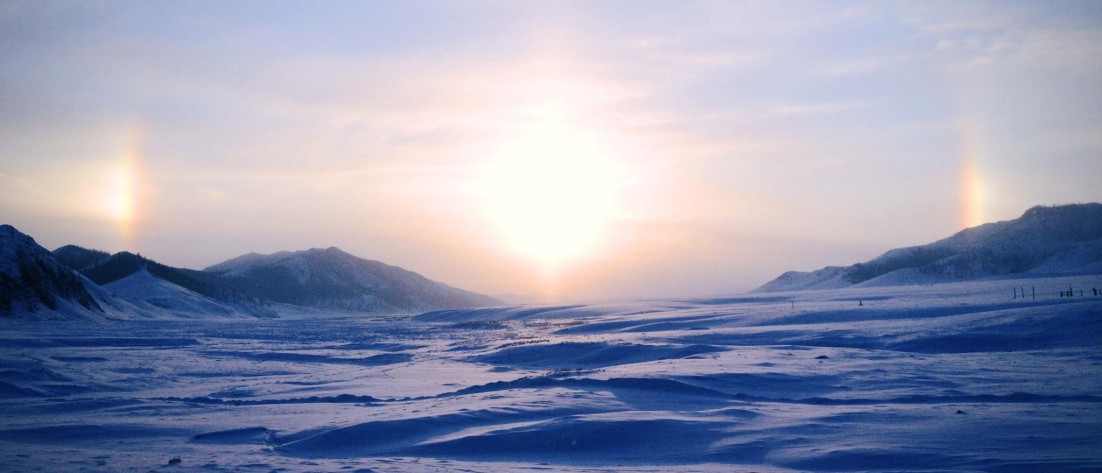The Thursday before my Mongolian Christmas, my teacher class and I played Christmas bingo. Rather than attempt to tell the biblical tale to members of a thoroughly non-Christian culture, I opted to stick with with the holiday’s secular trappings: bells, holly, candles, Santa. I went over the vocabulary before we started, and that went pretty well until I held up a picture of a decorated evergreen and asked what it was.
The teachers conferred with each other, double-checking the words in question. Then Setgel, the star pupil, confidently called out their answer: “New Year’s tree!”
New Year‘s tree? No, I told them firmly, shaking my head. In English, we call it a Christmas tree. They repeated the words dubiously, and we moved on to the next picture. But the vocabulary didn’t stick; every time a winning row included a tree, it was called back to me as a “New Year’s tree.”
I didn’t know it at the time, but I had Russia to thank for the confusion. During its 68 years as a Soviet satellite state, Mongolia (then called the Mongolian People’s Republic) adopted a number of Russian traditions. I don’t know whether Russian yolki were originally associated with Christmas in the days before the Soviet kibosh on religion, but now, as Anna explains, they’re definitely a New Year’s thing.
And as Russi has yolki, Mongolia has шинэ жилийн мод (shine jiliin mod). Christmas isn’t really a thing in a country with so few Christians, but similar-looking traditions, stripped of their religious connotations, have made their way in anyway. I can’t blame the Mongolians for adopting any tradition that incorporates light and sparkly things into their long winters. They celebrate the new year twice – on December 31st with the rest of the world, with champagne and fireworks and drunken parties, and again at Tsagaan Sar, the lunar new year and traditional beginning of spring.
The trees themselves vary widely in appearance. My roommate’s extended family had a small one covered in ornaments that closely resembled Western Christmas trees, though the Mongolian love of glitz was also evident in its multicolored fiberoptic inserts. The tree in front of one Erdenet’s shopping centers, by contrast, was not a tree at all, but a cone formed of tinsel garlands and brightly-colored, constantly flashing lights stretched taught between a tall pole at the center and the broken slabs of ice heaped around its base. I’ve seen some lovely specimens of the tradition, but this was not one of them.
I was in for more surprises at my school’s New Year’s celebration. I went home for New Year’s last year, and so I missed the fireworks and ice sculptures and other festivities held in Erdenet’s main square, but not my school’s parties. There aren’t many restaurants in Erdenet, and since they were all booked for the weekend closer to the end of the year, our parties were held on December 23rd.
Yes, parties, plural. We had one in the afternoon for the students, and then a teachers-only party later in the evening. The afternoon party was dry, save for one bottle of champagne (or shampanski, as they call it, in what I assume is the Russian fashion); the evening one was another story altogether, of which I remember about half.
But the afternoon party was memorable primarily for its entertainment. The students put on two dance numbers: one to a wordless, very pop-y version of “Jingle Bells,” another to a slow waltz. Waltzes, while not traditionally Mongolian, are nonetheless a dance party staple, interspersed unpredictably amongst the more expected pop and house music. The Mongolians I’ve asked say they learned waltzes from the Russians, who evidently did not teach them that three-beat dances do not work very well with four-beat music, nor four-beat dances with three-beat music.
We also had an appearance from a familiar character – or rather, an almost-familiar one. American traditions are quite firm on the fact that the jolly man with a big white beard wears red, though I’ve seen Father Christmas wear green in a few English depictions. But blue? I’d never seen Santa wear blue.
Then again, this wasn’t Santa Claus. He was Өвлийн Өвөө (övliin övöö) – Grandfather Winter, who I’d wager is the Mongolian incarnation of Russia’s Ded Moroz.
The white beard looked more than a little out of place in a country where I’ve never seen the elderly go white and very few are capable of growing even straggly little beards. But the fat, jolly grandfather image is plenty Mongolian. And whatever his origin, he was a welcome sight to a girl for whom Christmas would be an ordinary work day.
Even if he didn’t give us presents.
























